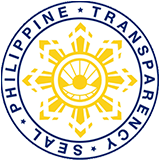The Department of Social Welfare and Development – NCR through its Adoption Resource and Referral Section (ARRS) recently held an “Adoption telling seminar.” Running on its fourth year with the theme “A Family of Trust: Telling and Talking about Adoption,” the seminar served as venue to openly discuss adoption to the adoptee and how to create avenues for communication, which is the key to understanding the situation.
The objective of the seminar is for the participants to appreciate the importance of telling the child of his/her adoption story and sharing helpful ways on opening conversations with adopted children.
The participants of the seminar were families from Metro Manila who resorted mostly in independent or pre-identified adoption. As cited in the Domestic Adoption Manual, this adoption happens “when the biological parents make a direct placement of the child either to a relative, a member of their family, or a friend/non-relative with whom they relinquish their child.” However, the DSWD-NCR does not encourage the practice of directly placing a child to a non-relative.
Activities in the seminar included testimonials from adoptive parents and adoptees and a lecture on adoption telling. Sharing their experiences with their child are Mr. Jason and Ms. Jennifer Baldueza, adoptive parents to Jesse, seven (7) years old.
They recalled that when Jesse turned five, he started asking if he came from his mommy’s tummy. Mrs. Baldueza answered this by saying that he came from her heart. The couple soon found out that their son has a knack for reading books, so they capitalized on this and gave him a story book entitled “Meet the Robinsons”. Somehow, Jesse related to the main character, Louis, who was also an orphan. Capping her sharing, Mrs. Baldueza told the audience to “tell the truth to your children.” “All throughout, we were emphasizing the importance of being open about everything and not keeping secrets to one another in the family.” she added.
On his part, Mr. Baldueza emphasized why it is important to tell the truth to the adopted child. He believes that it is imperative to tell the truth because it encourages an environment filled with trust and where the child is free to ask. Further, adoption is equivalent to rearing your own child because you give the same amount of time, effort and love as you would to a child from your own flesh and blood.
Speaking for the adoptees was Ms. Normina Mojica. She recounted that she was a freshman in high school when she found out that she was adopted. She described her situation then as unfortunate because she lived in an era where discrimination is rampant. She remembered some of her relatives said “pulot ka lang sa taeng kalabaw” and the horrible feeling of being ostracized. Her downward spiral began, where she was stripped of her college scholarship. Ms. Mojica concluded her message by telling the parents present to love and protect their child/ren. She added that God will guide the adoptive parents when the time comes for them to tell the truth to their child/ren.
For his part, Dr. Jan Harold D. Sia, a Developmental Behavioral Pediatrician gave a short lecture on adoption telling. He said that awareness on issues helps you and your child grow psychologically and boost your strength as a person which is a necessary step in building trust within the family. According to Dr. Sia, adoption telling should be done before the child asks questions and that there is no right or wrong timing. What matters is finding a middle ground before you talk about adoption with your child/ren.
Meanwhile, a question on efforts to locate the biological parents of his/her adopted child was raised by an adoptive parent.
On this, Director Ma. Alicia S. Bonoan of DSWD-NCR said that “Adoption is a socio-legal process, may batas po tayo, yung Domestic Adoption Act of 1998. Ang advantage po if you go through regular adoption; once you are matched, because that’s one of the processes of the legal way of doing adoption, you are given a case summary of the child that is matched to you. You have information about the parents. We tell our social workers, and it’s part of their trainings especially when we conduct sessions on case management, that there should be at least a line or two about the father because there could not be a baby kung walang ama. It’s not the whole comprehensive social case study report of the child pero malalaman ng adoptive parents that they have been matched to this child with this background. When the time comes that the child would want to trace his/her roots, all you have to do is get in touch with the social worker, and the social worker now would look into the adoption triangle which includes the adoptive parent, biological parents and the adoptee.”
The DSWD intensifies its advocacy for domestic adoption by encouraging families, couples and individuals to undergo the regular adoption process which includes attendance in the adoption forum, application for adoption, assessment, matching of child/ren for adoption and other legal adoption procedures. ###



